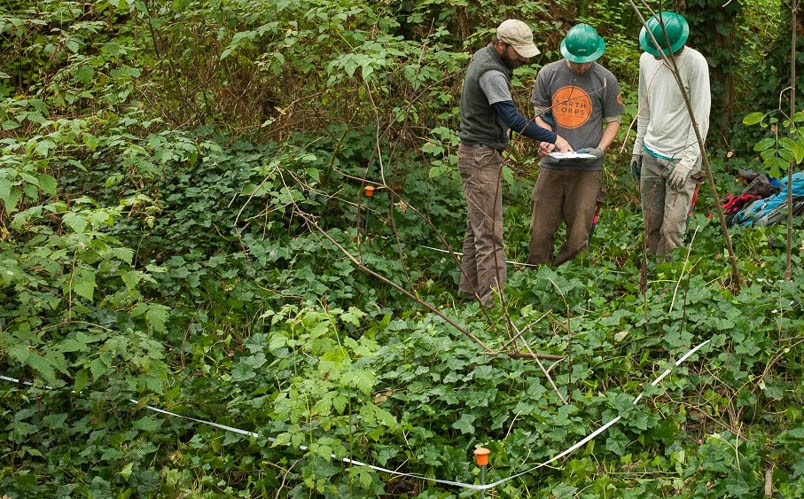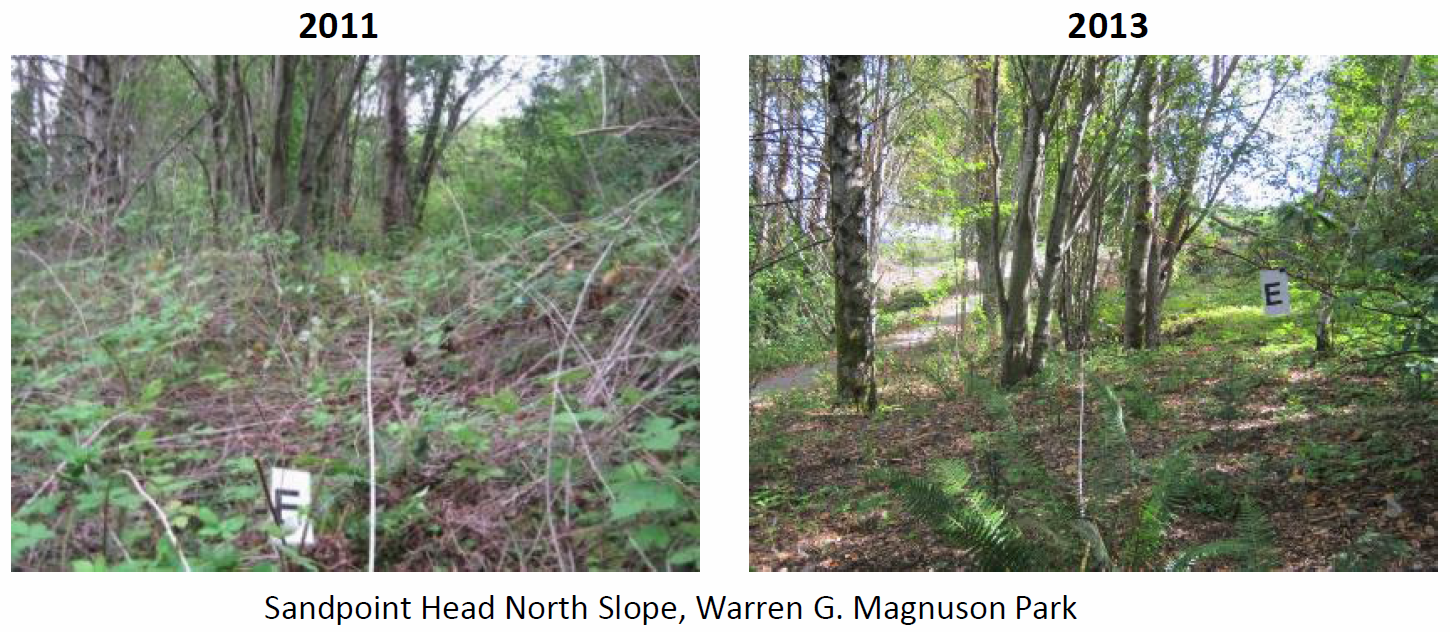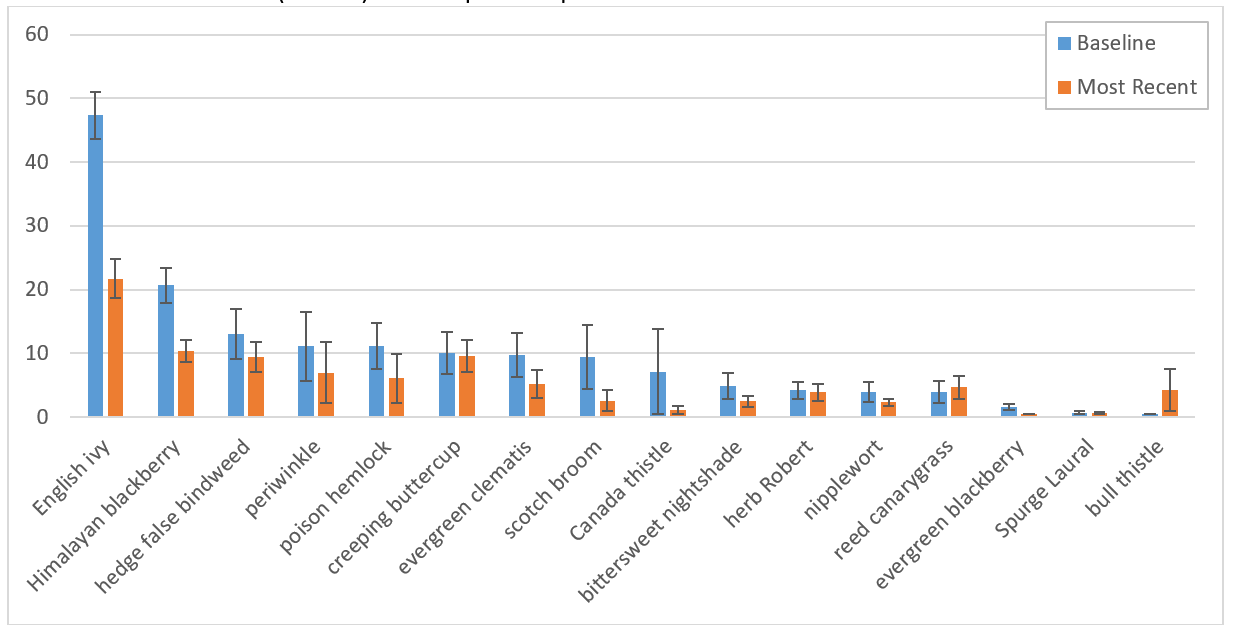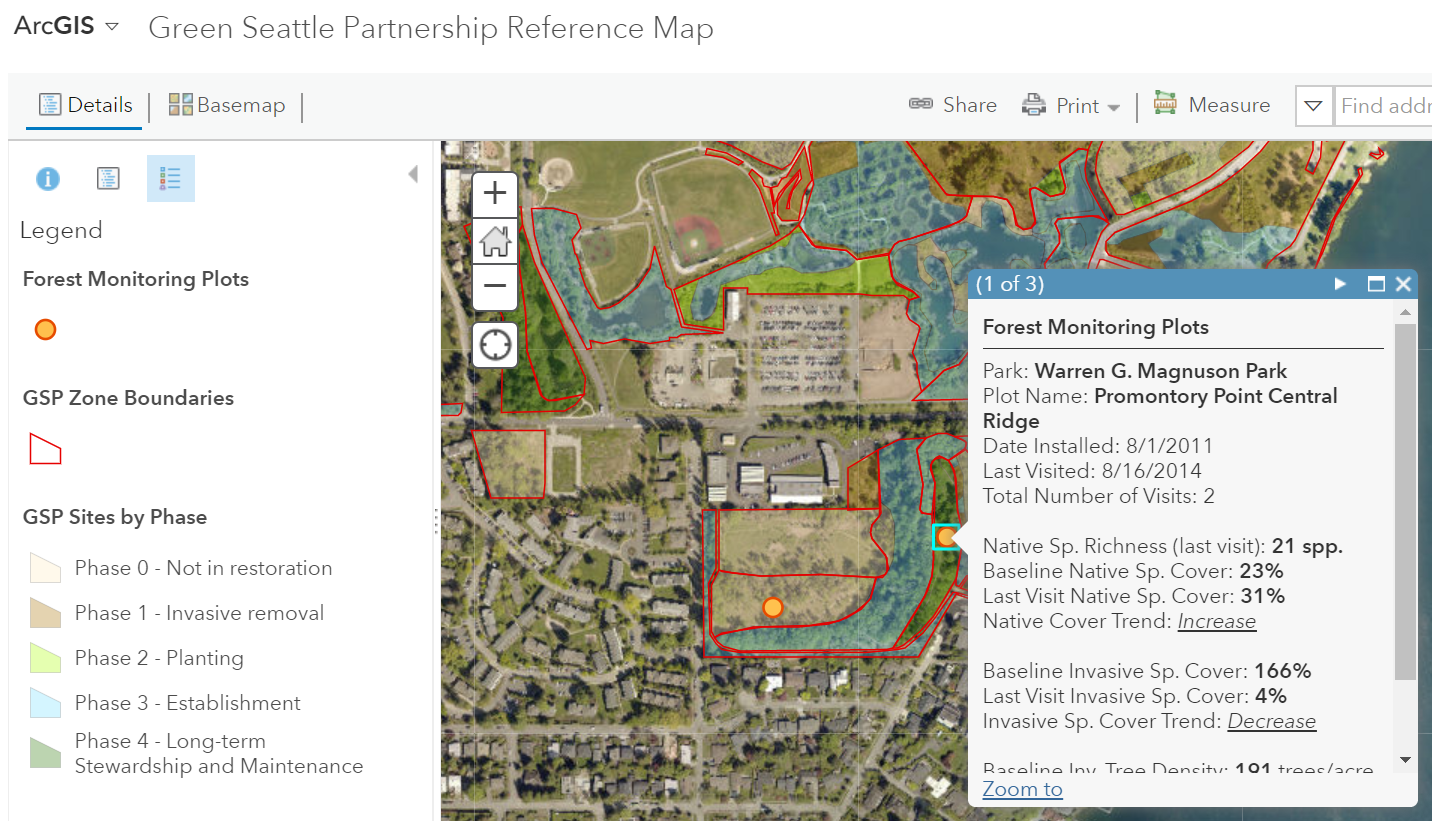GSP Forest Monitoring Program turns 10!
Did you know that the Green Seattle Partnership has been systematically monitoring the structure and composition of Seattle’s forested parklands for ten years?!? While inventorying and measuring vegetation have been ongoing in our parks for decades, the official launch of the GSP Forest Monitoring Program occurred in 2010. It is pretty amazing to think that volunteers and staff have been out tromping through the forests and collecting data on more than 150 permanent monitoring plots for an entire decade.

So, what are they actually doing out there?
The program was initiated as a way to provide an empirical analysis of change over time at GSP restoration sites. This is accomplished by collecting the standardized monitoring protocols that allow for the same data collection to be replicated during different phases of restoration and over time. Plots were established across the city and distributed proportionally based on the GSP Zone Target System. In 2018, we focused efforts on 150 permanent plots that will see re-monitoring every 5 years.
Why is it important to collect these data?
Monitoring helps us understand the success, value, and effectiveness of our restoration activities. The recorded information can be used to show the composition and structure of a site, which can be an important indicator of overall forest health. As we like to say, form = function.
Standardized monitoring protocols and the resulting data are valuable because they:
- Provide a quantitative and objective way to evaluate restoration progress;
- Allow for comparisons and generalizations across sites, parks, and municipalities over time; and,
- Improve our understanding of the effectiveness of restoration techniques, providing information to adapt management techniques.

What are we finding?
Analyses have uncovered some interesting trends. For example, overall invasive species cover has been reduced drastically (thanks to the amazing work by all of you!). Pesky weeds don’t disappear altogether though. As you are probably well aware, invasive weed control requires ongoing and repeated efforts. As expected, the data shows that while there is an initial drop in average weed cover, it is followed by a relative levelling off. It may be that keeping weeds below a particular threshold will require more sustained efforts over time.

Figure 1. Dominant invasive species (by average cover where present) showing changes from Baseline and Most Recent visits (N=140). Bars represent plus and minus Standard Error
We are also learning which species are more likely to see sustained reductions over time, and which species are harder to maintain control over. It is important to remember that this is a long-term dataset. It takes a long time for a planted tree to reach the canopy and so we’re just recording the first effects of restoration right now.
As we get more repeat data from across the city, next steps will include looking at how different forest types and restoration efforts are affecting these trends. We are also excited at the possibility of using these data to look deeper into the structure and function of our urban forests, including tracking sensitive species or assemblages as a result of climate change.
Where can you find more information?
We added the permanent plots to the GSP Reference Map this year! You can find the plot locations and can click each plot point to produce a summary of conditions and change over time. For additional directions on using the map, visit the new GSP webpage on ecological assessment efforts.

As our restoration techniques continue to be refined and improved upon, our forested natural areas are continuing to change and improve. Active restoration sites are becoming more and more established and resilient with the help of thousands of hours of community care and stewardship. This monitoring program will continue to be instrumental in documenting these changes and improve our understanding of how our work is, in fact changing the world.
